Can't Fall Asleep? Dr. Shelley Meyer Shares 5 Tricks to Fall Asleep Faster & Sleep Better
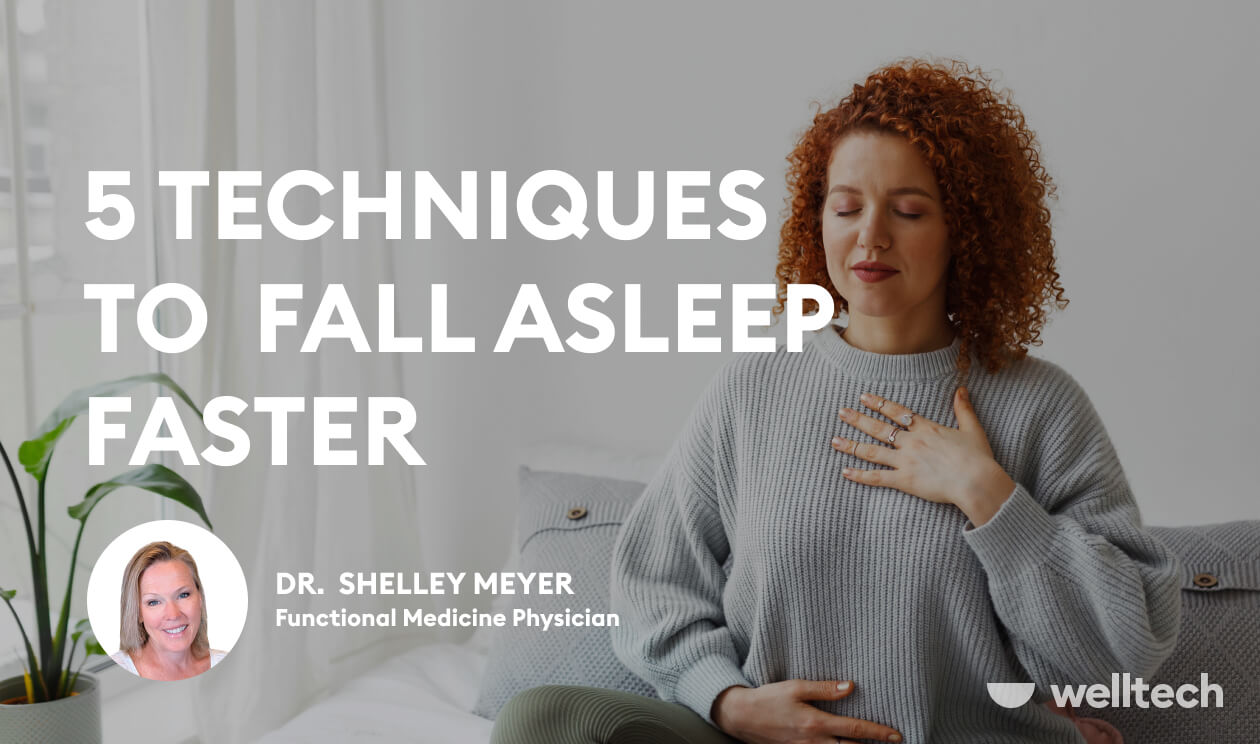

October 30, 2025

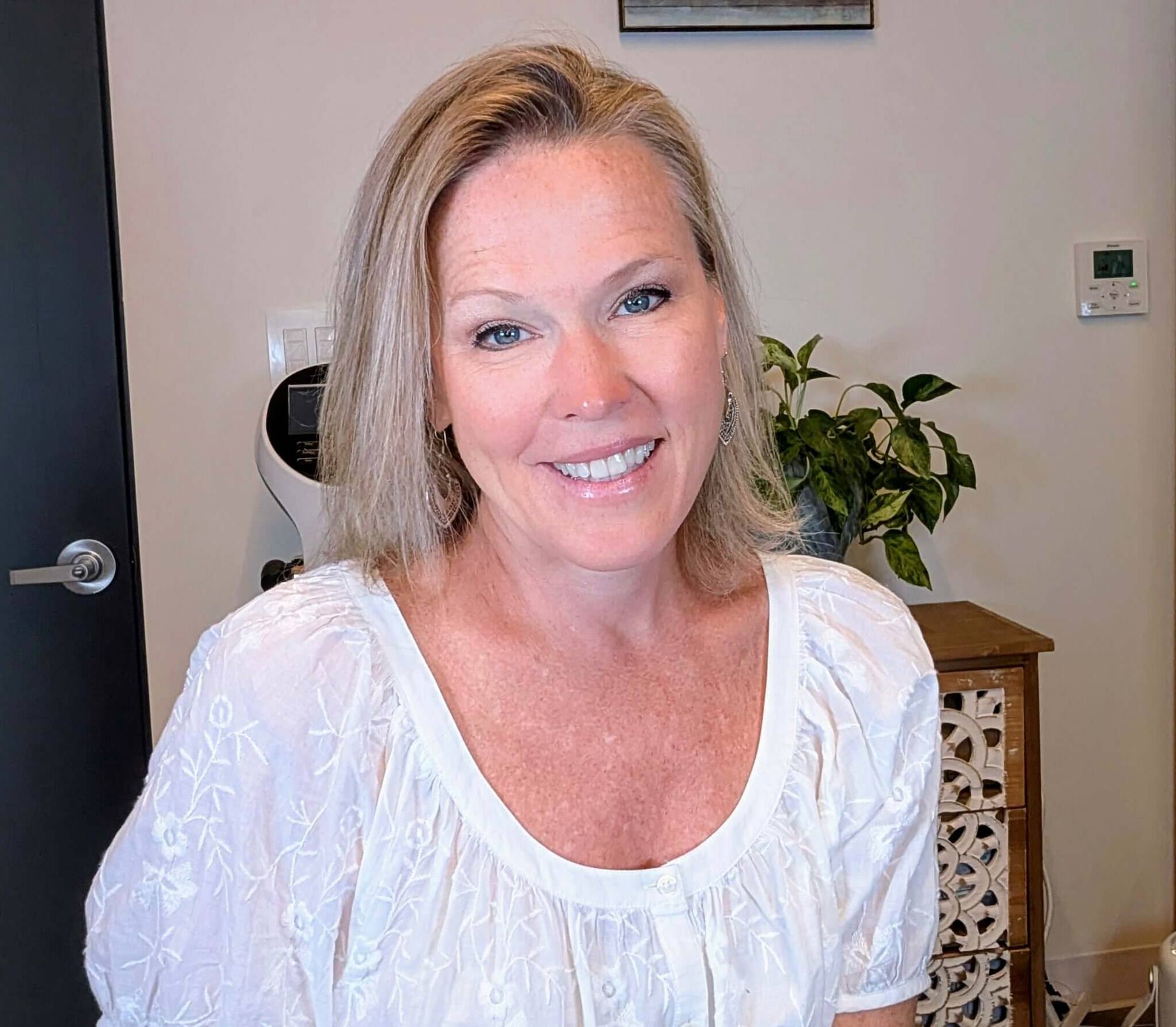
DO, RDN, IFMCP | Functional Medicine Physician | Family Physician | Registered Dietitian/Nutritionist | YouTube Creator @DrShelleyMeyer
Ever lie in bed, exhausted but somehow still wired? You're not alone. If your mind's running a marathon the second your head hits the pillow, you might just need a better wind-down routine.
We teamed up with Dr. Shelley, a board-certified family physician, to break down five science-backed techniques that actually help you relax and drift off faster.
But first, we asked Dr. Shelley: Do these techniques work on their own, or do they need backup from your daytime routine?
Dr. Shelley weighs in: "While these techniques can offer immediate calm and establish a great nighttime routine, long-term sleep health also depends on how you support your body throughout the day, especially with balanced blood sugar, hormone regulation, and consistent circadian habits. Think of these as tools in your nighttime toolkit, but remember that other lifestyle changes can offer complete sleep support!"
What does it mean for you? These methods are effective, but they work even better when combined with solid daytime habits. This approach will not only help you fall asleep faster, but also let you stay asleep for longer and have a deeper rest.
Now, let's get into it.
This one's a classic for a reason.
The 4-7-8 breathing technique activates your parasympathetic nervous system, aka your body's "chill out" mode. It slows your heart rate, reduces stress hormones, and signals to your brain that it's safe to sleep.
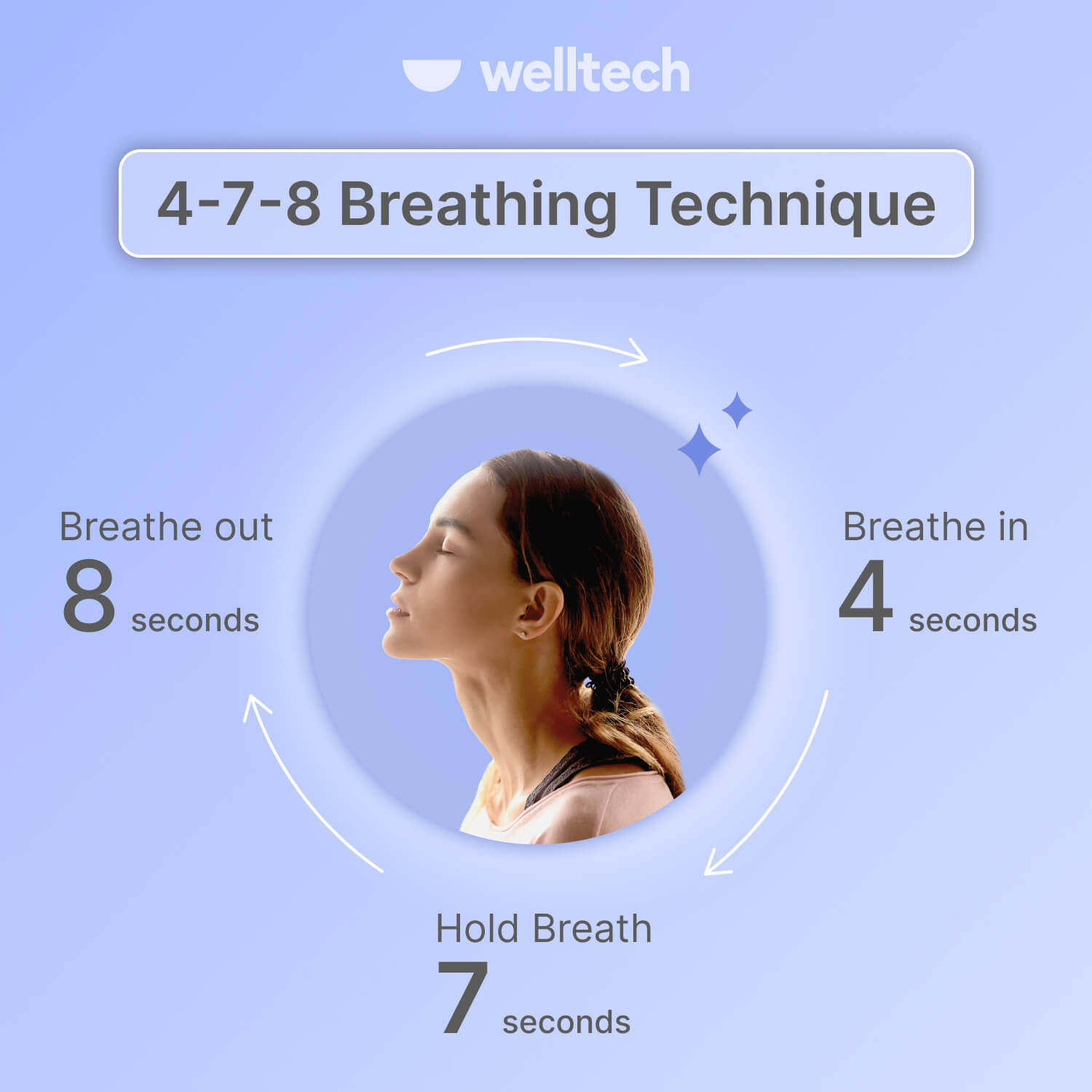
How to do it:
Exhale completely through your mouth
For 4 counts, inhale quietly through your nose with your mouth closed
For 7 counts, hold your breath
For 8 counts, exhale completely through your mouth
Repeat the cycle 3–4 times
The ratio is what matters here: holding your breath longer than you inhale forces a deep exhale, which is where the magic happens. Your body literally can't stay anxious when you're breathing like this.
Your body holds stress in sneaky places: jaw, shoulders, hips. Progressive muscle relaxation (PMR) helps you notice and release that tension, one muscle group at a time.
What it does: PMR systematically tenses and then relaxes different muscle groups, teaching your body the difference between tension and relaxation. Studies show it can reduce insomnia symptoms and improve overall sleep quality.
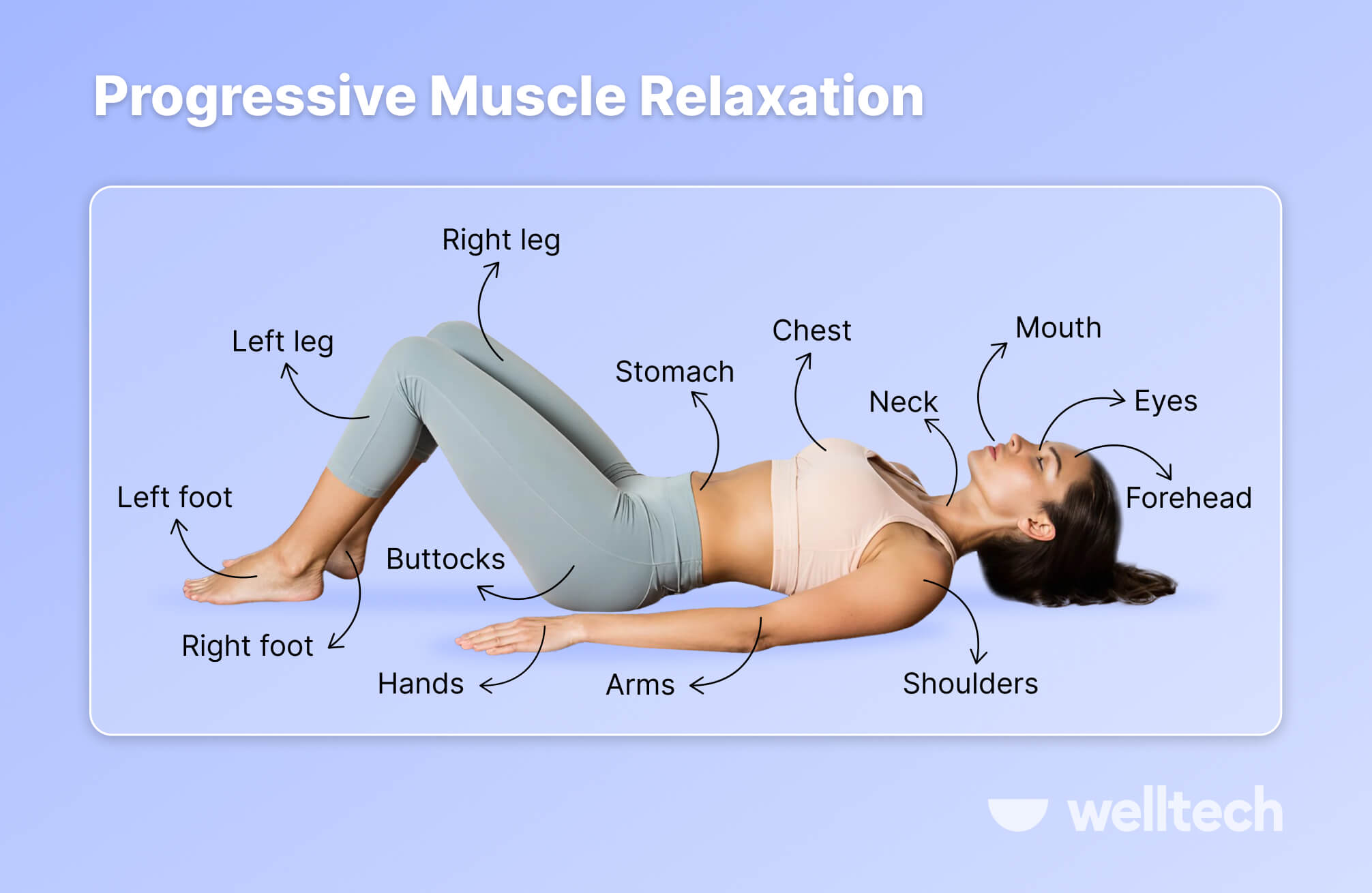
How to do it:
Lie down comfortably on your back
Tense the muscles tightly for 5 seconds, starting with your feet
Release completely and notice the difference for 10 seconds
Move up to your calves, thighs, glutes, stomach, chest, arms, hands, neck, and face
Focus on the feeling of release after each tension
By the time you reach your face, you might already be halfway to dreamland. The key is really noticing that contrast so your body learns what "relaxed" actually feels like.
If your brain loves to spiral into existential thoughts at bedtime, try a weirdly effective technique called cognitive shuffling.
What it does: It interrupts repetitive, anxious thought patterns by giving your brain something random and non-threatening to focus on. It mimics the random, nonsensical thoughts that naturally occur as you fall asleep, so you're basically hacking your way into sleep mode.
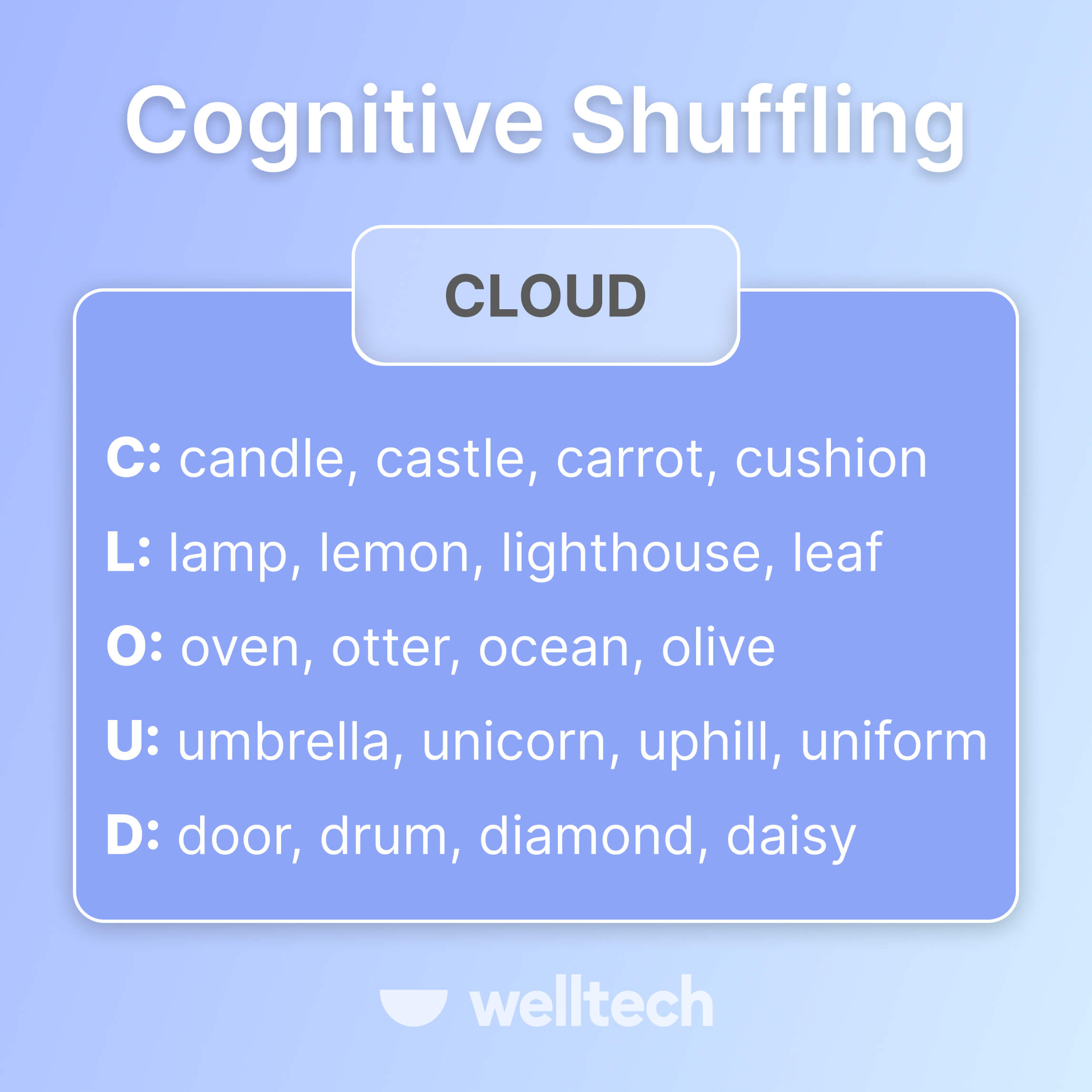
How to do it:
Pick a random, neutral word (like "cloud" or "pillow"; pick words with no strong emotional connection)
For each letter, think of as many words as you can that start with that letter
Visualize each word as you think of it, and stay in this visualization for at least a couple of seconds
Move to the next letter when you run out of words for a current one
Your brain gets bored, stops problem-solving, and drifts off.
Meditation before bed isn't about achieving Zen or clearing your mind completely, but about creating space to just be.
Even 5–10 minutes can shift your nervous system from "alert" to "rest" mode.
What it does: Meditation helps quiet mental chatter, reduces cortisol (your stress hormone), and eases you into a calm, sleep-ready state. It's less about doing it perfectly and more about showing up for yourself.
How to get started:
Try this 10-minute before-bed meditation designed specifically to help you unwind. It's gentle, guided, and beginner-friendly: no pressure, no judgment. Just you, your breath, and a little peace before sleep.
If counting sheep never worked for you, try painting a mental picture instead. Guided visualization redirects your focus away from stress and onto calming, detailed imagery.
What it does: Your brain doesn't fully distinguish between real and vividly imagined experiences. When you visualize a peaceful scene, your body responds as if you're actually there: heart rate slows, muscles relax, stress melts away.
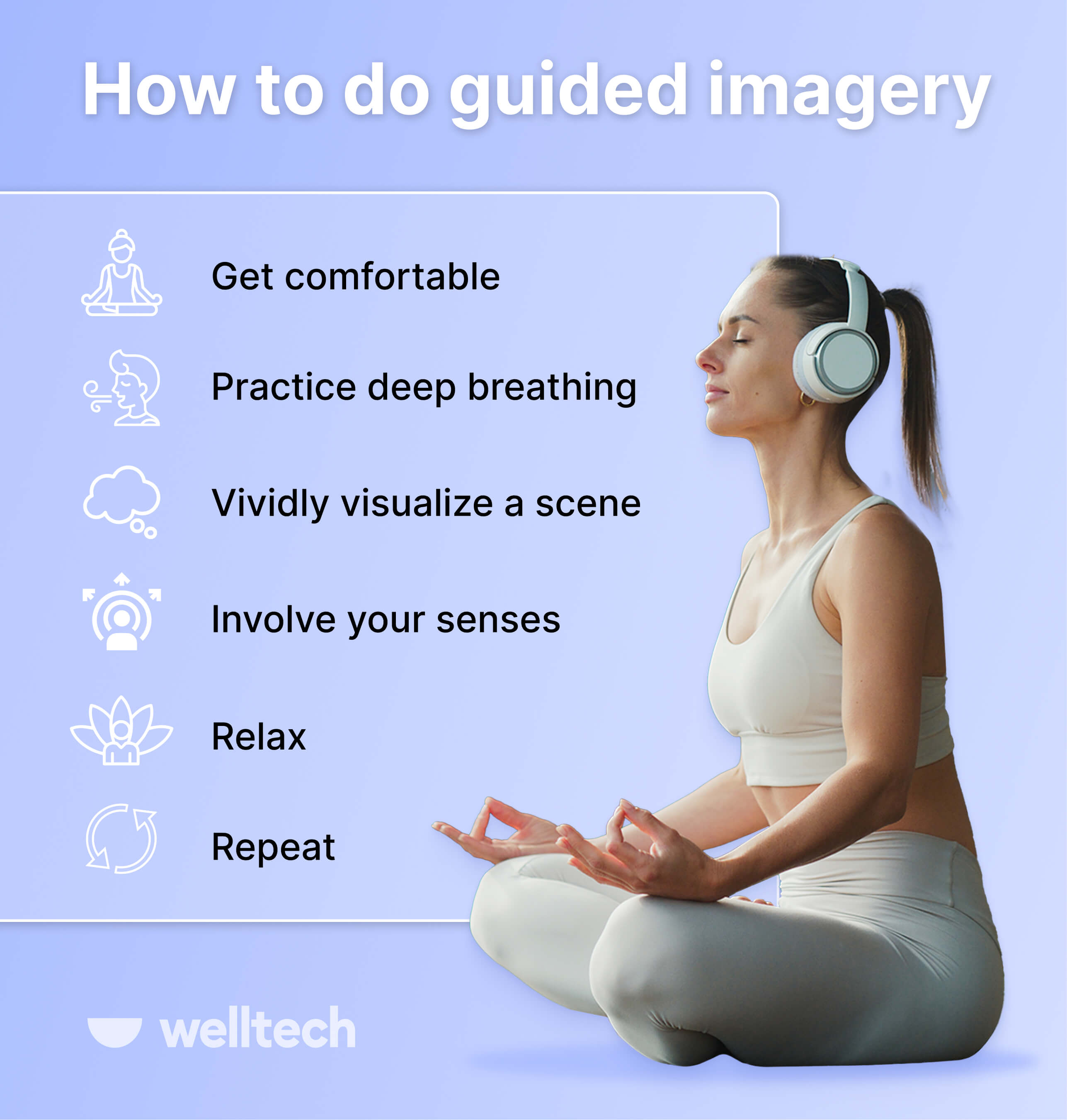
How to do it:
Close your eyes and picture a place where you feel completely at ease (a beach, forest, cozy cabin, etc.)
Engage all your senses: what do you see, hear, smell, feel?
Walk yourself through the scene slowly, adding rich details
If your mind wanders, gently guide it back to the scene
The more detail, the better. Think of it as intentional mental storytelling that lulls your brain into sleep rather than simply daydreaming.
Here's the thing: unwinding at night is important, but if you want truly restorative sleep, you've got to think bigger picture.
Dr. Shelley's advice? "Believe it or not, good sleep starts in the morning.
Expose yourself to natural light early in the day, keep caffeine to the morning hours, and establish a consistent wind-down routine at night. Take a quick morning walk or have your coffee outside to help boost your circadian rhythm and set your body up for a productive day and a good night's sleep!"
And if you're navigating perimenopause or menopause, there's an extra layer to consider: "Supporting your cortisol and melatonin rhythms with a steady meal schedule, magnesium, and adaptogens can make these bedtime practices even more effective."
The bottom line? Your body wants to rest. With the right cues and habits, it can, and these techniques are your nightly roadmap to get there. Sweet dreams start with showing up for yourself, one breath at a time.
This article is intended for general informational purposes only and does not address individual circumstances. It is not a substitute for professional advice or help and should not be relied on to make decisions of any kind. Any action you take upon the information presented in this article is strictly at your own risk and responsibility!